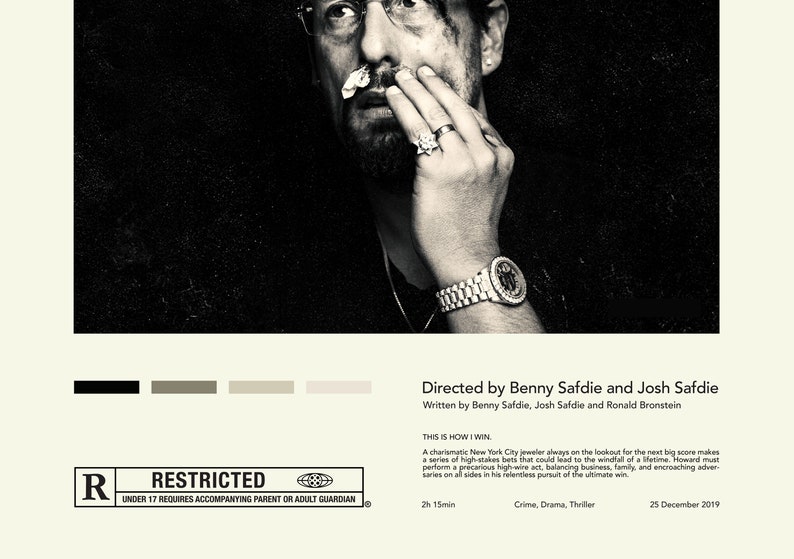

There was just more.īS: There’s a lot of carts pushing to the location, which is new. I went crazy, and I was just running around and ripping them all off.īS: But it was like, “Hey, take it easy. JS: I remember the first day, we were on set, and I saw these “No Parking” signs on the 47th. When we talked in 2017 about how you guys made "Good Time," you described it as "a construction site mentality." How was that different here, working on a bigger project, and with a more classic cinematographer like Darius Khondji?īS: It’s a bigger building, but it’s the same mindset. People LOVE the Furby.īS: It’s like a bringing back of the Furby. JS: It felt iconic in Howard’s life, but I never really thought it was going to have this effect that it has on the internet, weirdly. But they weren’t going to have the trapped feeling that the Furby has.īS: And also it feels-because no one had actually done the Furby-it makes it feel that Howard is a real guy. There were pieces that we could have borrowed from jewelers. JS: It was so sad! So it starts with research, and then you have to get to an original place with Howard.
Uncut gems josh safdie movie#
And all of a sudden the themes of the movie jump out at you-the trappings, this thing that is trapped, the way the eyes move back and forth.īS: We were about to shoot the close-up, and Josh runs and says, “Wait, wait!” And he made the eyes cross-eyed. And then you look at a Furby, and you see the sad eyes of a Furby, and you just imagine what that looks like encased in gold and diamonds. So, I was jumping back into that mindset, going, Well, if Howard was popping in the ‘90s, and the late ‘90s was really when he was working with everyone who is the shit-then what was popping in the late ‘90s? And it was like, Oh, it was a Furby. The idea of taking pop culture and blinging it out was the foundation of that business, and Howard was a pioneer of that.

Like a “Rick and Morty” piece is probably out there. And today, it’s basically anything memetic, anything remotely revolving around pop culture or cartoons.

What you do is you get into the research, you look at jewelers and the way that bling culture lead to where it stands today. JOSH SAFDIE: What’s weird about the Furby jewelry is, that’s a moment of pure imagination. So I have to know-where did the Furby jewelry come from? Is it real? I know you guys do a ton of research for your characters and locations, and that "Uncut Gems" has more or less been in the works for ten years. But I have been wanting to do something like, “Can You Handel the News?” I have a few ideas. Will Handel ever make a return, at some point?īS: I am going to bring it back. With an H!” That really got me-that’s probably the stupidest joke I’ve ever heard.īS: But it's next level. It's anti-comedy gold.īENNY SAFDIE: "So what are you doing here? I don't know!" In doing my research for this interview, I rediscovered Benny’s stand-up comedian character, Ralph Handel. sat down with the Safdie brothers to unpack "Uncut Gems," the thematic significance of Howard's blinged-out Furby, how filmmaking is a fascistic art form, and more. His life is the ultimate Safdie experience-a character you would hate to cross paths with in real life, but whose cinematic world is so rich you don’t want to leave it. Like Arielle Holmes’ homeless junkie in the Safdies’ “Heaven Knows What,” or Robert Pattinson’s manipulative criminal in “Good Time,” Sandler’s Howard rushes through very specific corners of New York, evading grave consequences, unable to get out of his own way. The Safdies have created their own style of NYC with deeply researched, roller coaster character pieces that are unafraid of unlikable protagonists, accompanied by synth-heavy scores that portray grimy New Yorkers in a light both mystical and cinematically old school.


 0 kommentar(er)
0 kommentar(er)
